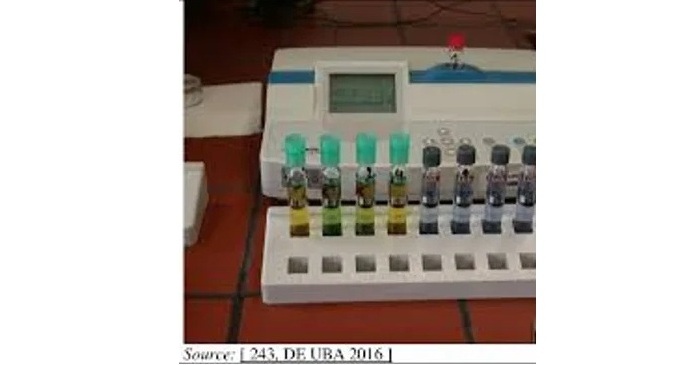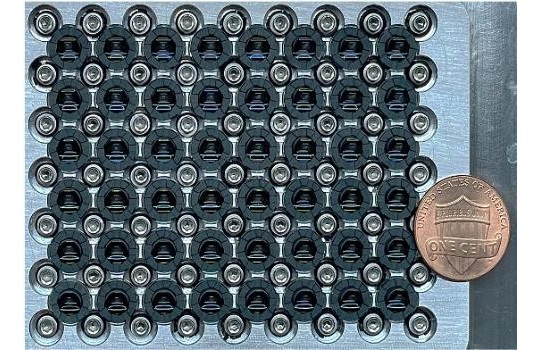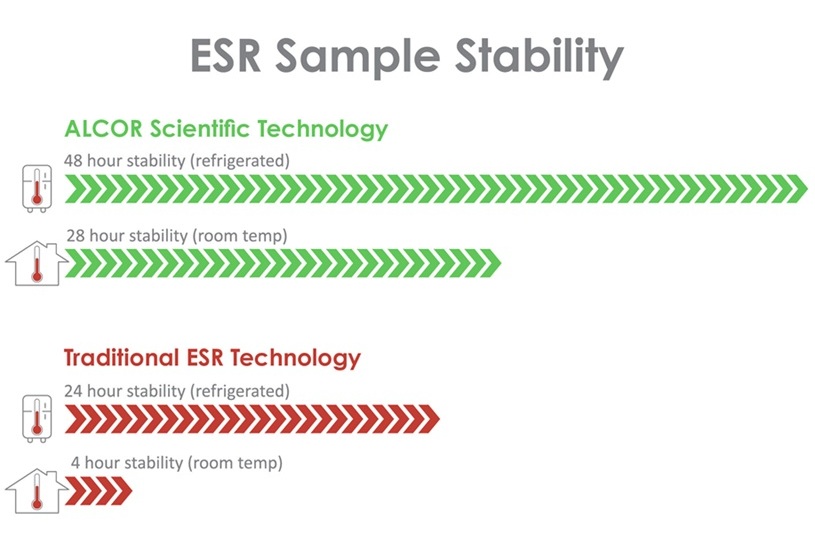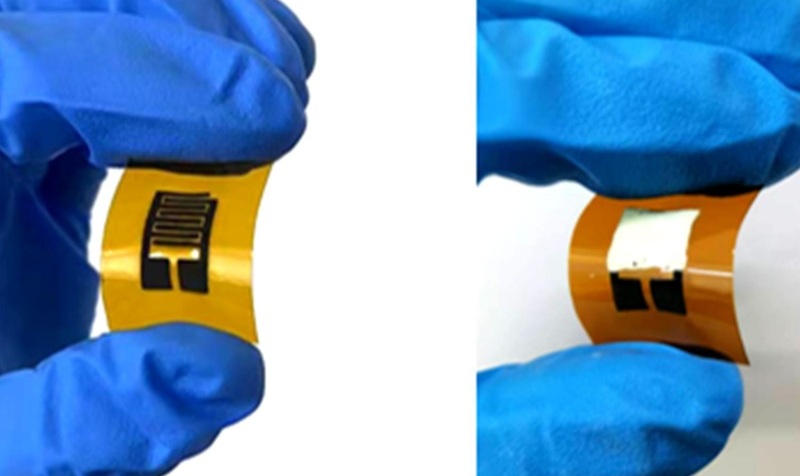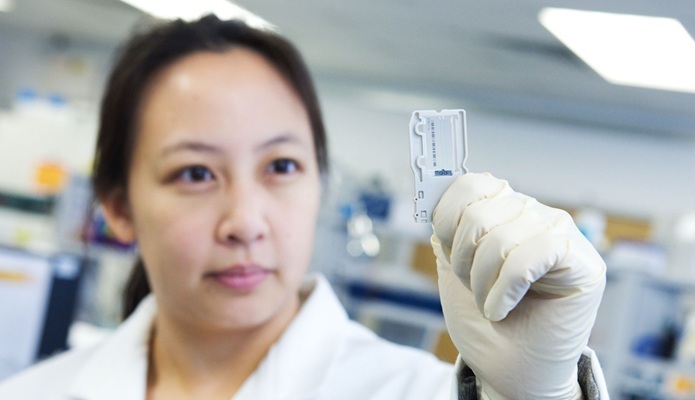Liquid Biopsies Detect Pediatric Bone Tumors Based on Epigenetic Profiles
|
By LabMedica International staff writers Posted on 17 Jun 2021 |
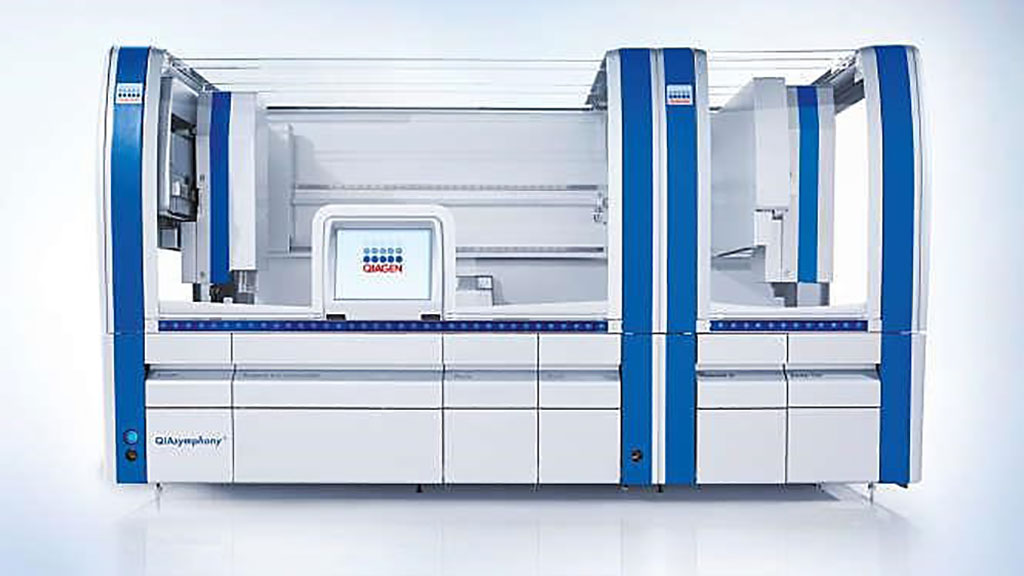
Image: The QIAsymphony SP enables sample preparation of DNA, RNA, and bacterial and viral nucleic acids from a wide range of starting materials (Photo courtesy of Qiagen)
Sequencing of cell-free DNA (cfDNA) in the blood of cancer patients (liquid biopsy) provides attractive opportunities for early diagnosis, assessment of treatment response, and minimally invasive disease monitoring. As a consequence, cfDNA analysis holds great promise for precision oncology and personalized therapies, and is currently evaluated in a broad range of clinical studies.
Ewing sarcoma (EwS) constitutes an ideal model cancer for establishing and validating fragment-based liquid biopsy analysis for pediatric tumors. EwS has a unique epigenetic signature with established clinical associations, which constitutes a potential epigenetic marker for early diagnosis and tumor classification based on cfDNA. Moreover, EwS tumors have well-established genetic aberrations that can be used for comparison.
An international team led by scientists at the St. Anna Children’s Cancer Research Institute (Vienna, Austria) and their colleagues included 200 plasma samples from 95 patients with EwS and 41 plasma samples from 31 patients with other types of sarcoma: EwS-like sarcoma (three patients, two of which were positive for the CIC-DUX4 fusion gene), osteosarcoma (eight patients), rhabdomyosarcoma (12 patients), synovial sarcoma (three patients), and other types of sarcoma (five patients). Plasma samples from 22 healthy individuals (24–50 years old) were used as controls.
cfDNA was isolated using the QIAsymphony Circulating DNA Kit with the QIAsymphony SP instrument or the QIAampMinElute cfDNA Kit (Qiagen, Hilden, Germany). Whole-genome sequencing libraries were generated from 10 ng of cfDNA. Final libraries were eluted in 20 µl nuclease-free water, quantified with the Qubit dsDNA HS Assay Kit (Thermo Fisher Scientific, Waltham, MA, USA). Patient-specific assays for fusion gene detection and quantification were designed following the guidelines from the Bio-Rad ddPCR (Bio-Rad, Hercules, CA, USA).
The team reported that after confirming that they could detect tumor-derived DNA in their cell-free DNA samples, they noted that the tumor-derived DNA tended to be shorter than the cell-free DNA found among healthy controls. These fragments were often about 167 base pairs in size, which corresponds to the length of DNA that wraps around a nucleosome plus linker DNA. These shorter tumor-derived DNA fragments were additionally found among patients for whom there were no detectable genetic changes. This suggested that fragmentation patterns could be used to identify tumor-derived DNA independent of genetic alterations.
The scientists further developed a tool they dubbed LIQUORICE, for liquid biopsy regions-of-interest coverage estimation, that overlays these genome-wide cell-free DNA fragment profiles atop a predetermined set of genomic regions where epigenetic changes often occur in the cancer type. In that way, it develops a consensus signature of fragment coverage in those regions. They additionally developed machine-learning classifiers to not only distinguish individuals with cancer from controls but also between different types of pediatric sarcoma, without relying on the recurrent genetic changes. When they tested their classifiers, they found they were highly sensitive.
The authors concluded that their study demonstrated how deep whole-genome sequencing of cfDNA enables comprehensive detection, classification, and monitoring of pediatric tumors based on their genetic and epigenetic profiles, thus providing a clinically relevant method for liquid biopsy analysis in cancers with few or no genetic alterations. The study was published on May 28,2021 in the journal Nature Communications.
Related Links:
St. Anna Children’s Cancer Research Institute
Qiagen
Thermo Fisher Scientific
Bio-Rad
Ewing sarcoma (EwS) constitutes an ideal model cancer for establishing and validating fragment-based liquid biopsy analysis for pediatric tumors. EwS has a unique epigenetic signature with established clinical associations, which constitutes a potential epigenetic marker for early diagnosis and tumor classification based on cfDNA. Moreover, EwS tumors have well-established genetic aberrations that can be used for comparison.
An international team led by scientists at the St. Anna Children’s Cancer Research Institute (Vienna, Austria) and their colleagues included 200 plasma samples from 95 patients with EwS and 41 plasma samples from 31 patients with other types of sarcoma: EwS-like sarcoma (three patients, two of which were positive for the CIC-DUX4 fusion gene), osteosarcoma (eight patients), rhabdomyosarcoma (12 patients), synovial sarcoma (three patients), and other types of sarcoma (five patients). Plasma samples from 22 healthy individuals (24–50 years old) were used as controls.
cfDNA was isolated using the QIAsymphony Circulating DNA Kit with the QIAsymphony SP instrument or the QIAampMinElute cfDNA Kit (Qiagen, Hilden, Germany). Whole-genome sequencing libraries were generated from 10 ng of cfDNA. Final libraries were eluted in 20 µl nuclease-free water, quantified with the Qubit dsDNA HS Assay Kit (Thermo Fisher Scientific, Waltham, MA, USA). Patient-specific assays for fusion gene detection and quantification were designed following the guidelines from the Bio-Rad ddPCR (Bio-Rad, Hercules, CA, USA).
The team reported that after confirming that they could detect tumor-derived DNA in their cell-free DNA samples, they noted that the tumor-derived DNA tended to be shorter than the cell-free DNA found among healthy controls. These fragments were often about 167 base pairs in size, which corresponds to the length of DNA that wraps around a nucleosome plus linker DNA. These shorter tumor-derived DNA fragments were additionally found among patients for whom there were no detectable genetic changes. This suggested that fragmentation patterns could be used to identify tumor-derived DNA independent of genetic alterations.
The scientists further developed a tool they dubbed LIQUORICE, for liquid biopsy regions-of-interest coverage estimation, that overlays these genome-wide cell-free DNA fragment profiles atop a predetermined set of genomic regions where epigenetic changes often occur in the cancer type. In that way, it develops a consensus signature of fragment coverage in those regions. They additionally developed machine-learning classifiers to not only distinguish individuals with cancer from controls but also between different types of pediatric sarcoma, without relying on the recurrent genetic changes. When they tested their classifiers, they found they were highly sensitive.
The authors concluded that their study demonstrated how deep whole-genome sequencing of cfDNA enables comprehensive detection, classification, and monitoring of pediatric tumors based on their genetic and epigenetic profiles, thus providing a clinically relevant method for liquid biopsy analysis in cancers with few or no genetic alterations. The study was published on May 28,2021 in the journal Nature Communications.
Related Links:
St. Anna Children’s Cancer Research Institute
Qiagen
Thermo Fisher Scientific
Bio-Rad
Latest Pathology News
- AI Tool Helps Surgeons Distinguish Aggressive Glioblastoma from Other Brain Cancers in Real-Time
- New Tool Could Revolutionize Acute Leukemia Diagnosis
- New Microscope Promises to Speed Up Medical Diagnostics
- ESR Testing Breakthrough Extends Blood Sample Stability from 4 to 28 Hours
- Accurate Pathological Analysis Improves Treatment Outcomes for Adult Fibrosarcoma
- Clinicopathologic Study Supports Exclusion of Cervical Serous Carcinoma from WHO Classification
- Mobile-Compatible AI-Powered System to Revolutionize Malaria Diagnosis
- Compact AI-Powered Microscope Enables Rapid Cost-Effective Cancer Scoring
- New Method Enables Precise Detection of Nanoplastics in Body
- AI-Powered Tool Improves Cancer Tissue Analysis
- AI Platform Uses 3D Visualization to Reveal Disease Biomarkers in Multiomics Data
- AI Tool Detects Early Signs of Blood Mutations Linked to Cancer and Heart Disease
- Multi-Omics AI Model Improves Preterm Birth Prediction Accuracy
- AI-Based Approach Diagnoses Colorectal Cancer from Gut Microbiota
- Topical Fluorescent Imaging Technique Detects Basal Cell Carcinoma
- AI Detects Early Prostate Cancer Missed by Pathologists
Channels
Clinical Chemistry
view channel
VOCs Show Promise for Early Multi-Cancer Detection
Early cancer detection is critical to improving survival rates, but most current screening methods focus on individual cancer types and often involve invasive procedures. This makes it difficult to identify... Read more
Portable Raman Spectroscopy Offers Cost-Effective Kidney Disease Diagnosis at POC
Kidney disease is typically diagnosed through blood or urine tests, often when patients present with symptoms such as blood in urine, shortness of breath, or weight loss. While these tests are common,... Read moreHematology
view channel
Viscoelastic Testing Could Improve Treatment of Maternal Hemorrhage
Postpartum hemorrhage, severe bleeding after childbirth, remains one of the leading causes of maternal mortality worldwide, yet many of these deaths are preventable. Standard care can be hindered by delays... Read more
Pioneering Model Measures Radiation Exposure in Blood for Precise Cancer Treatments
Scientists have long focused on protecting organs near tumors during radiotherapy, but blood — a vital, circulating tissue — has largely been excluded from dose calculations. Each blood cell passing through... Read more
Platelets Could Improve Early and Minimally Invasive Detection of Cancer
Platelets are widely recognized for their role in blood clotting and scab formation, but they also play a crucial role in immune defense by detecting pathogens and recruiting immune cells.... Read more
Portable and Disposable Device Obtains Platelet-Rich Plasma Without Complex Equipment
Platelet-rich plasma (PRP) plays a crucial role in regenerative medicine due to its ability to accelerate healing and repair tissue. However, obtaining PRP traditionally requires expensive centrifugation... Read moreImmunology
view channel
Novel Tool Predicts Most Effective Multiple Sclerosis Medication for Patients
Multiple sclerosis (MS) is a chronic autoimmune and degenerative neurological disease that affects the central nervous system, leading to motor, cognitive, and mental impairments. Symptoms can include... Read more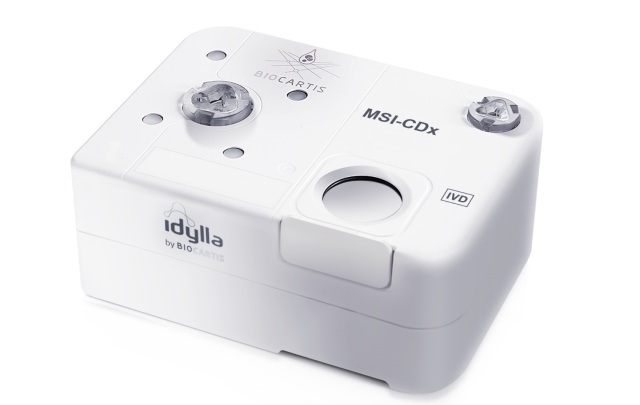
Companion Diagnostic Test for CRC Patients Identifies Eligible Treatment Population
Colorectal cancer remains one of the leading causes of cancer-related deaths worldwide, and identifying which patients will benefit most from targeted immunotherapies is critical. Existing diagnostic methods... Read more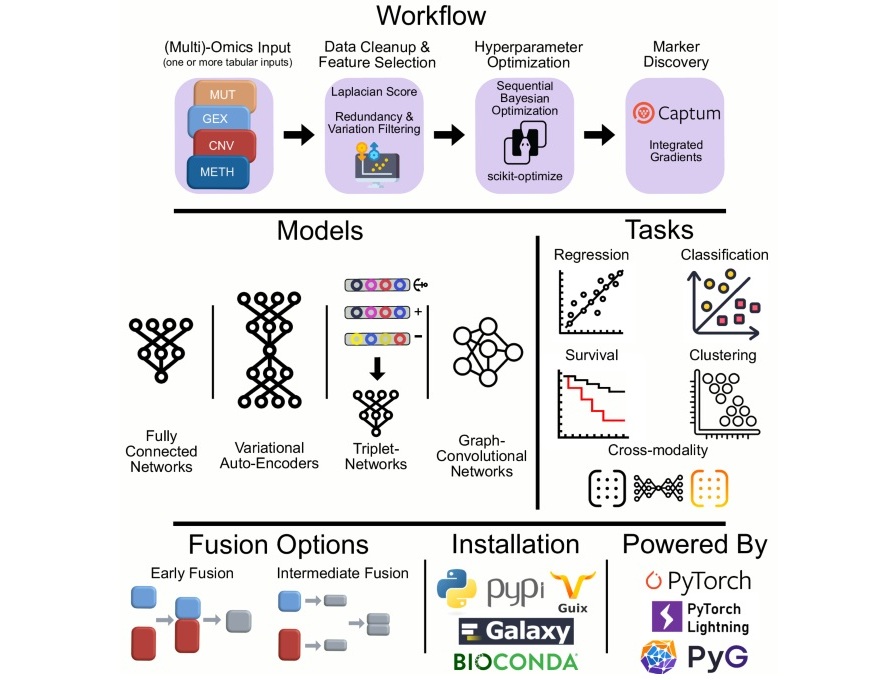
Novel Tool Uses Deep Learning for Precision Cancer Therapy
Nearly 50 new cancer therapies are approved each year, but selecting the right one for patients with highly individual tumor characteristics remains a major challenge. Physicians struggle to navigate the... Read more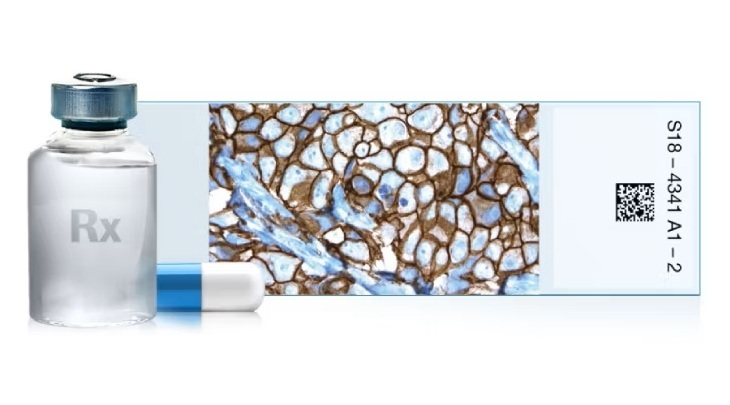
Companion Diagnostic Test Identifies HER2-Ultralow Breast Cancer and Biliary Tract Cancer Patients
Breast cancer is the most common cancer in Europe, with more than 564,000 new cases and 145,000 deaths annually. Metastatic breast cancer is rising in younger populations and remains the leading cause... Read moreMicrobiology
view channel
Fast Noninvasive Bedside Test Uses Sugar Fingerprint to Detect Fungal Infections
Candida bloodstream infections are a growing global health threat, causing an estimated 6 million cases and 3.8 million deaths annually. Hospitals are particularly vulnerable, as weakened patients after... Read more
Rapid Sepsis Diagnostic Device to Enable Personalized Critical Care for ICU Patients
Sepsis is a life-threatening condition that occurs when the body’s response to infection spirals out of control, damaging organs and leading to critical illness. Patients often arrive at intensive care... Read morePathology
view channel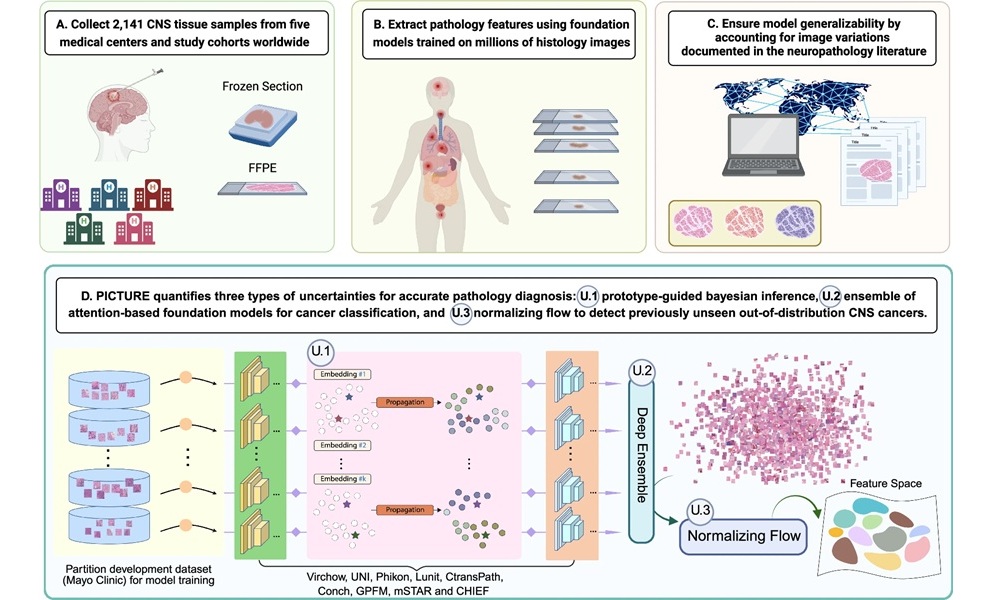
AI Tool Helps Surgeons Distinguish Aggressive Glioblastoma from Other Brain Cancers in Real-Time
Accurately distinguishing between brain tumors during surgery is one of the toughest diagnostic challenges in neuro-oncology. Glioblastoma, the most common and aggressive brain tumor, often appears similar... Read more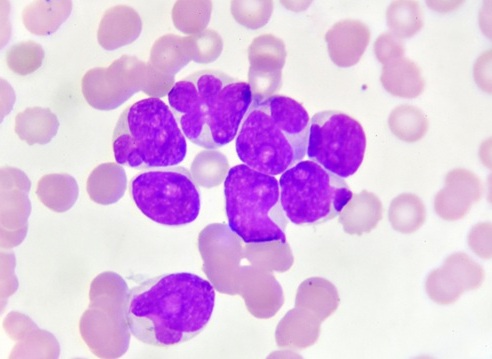
New Tool Could Revolutionize Acute Leukemia Diagnosis
Acute leukemia is a highly aggressive blood cancer that requires rapid and accurate diagnosis to guide treatment decisions. Current diagnostic methods, which rely on molecular and cytogenetic testing,... Read moreTechnology
view channel
Hybrid Pipette Combines Manual Control with Fast Electronic Aliquoting
Manual pipettes offer the control needed for delicate tasks such as mixing or supernatant removal, but typically fall short in repetitive workflows like aliquoting. Electronic pipettes solve this problem... Read more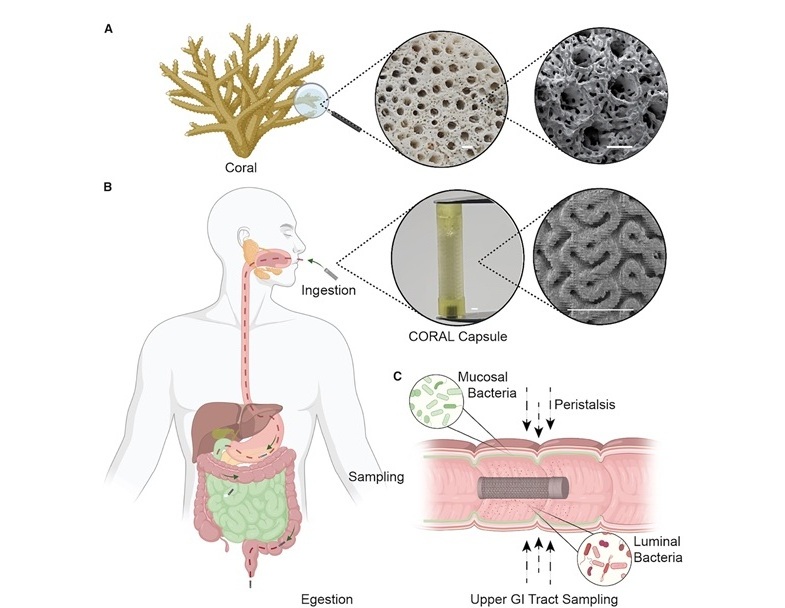
Coral-Inspired Capsule Samples Hidden Bacteria from Small Intestine
The gut microbiome has been linked to conditions ranging from immune disorders to mental health, yet conventional stool tests often fail to capture bacterial populations in the small intestine.... Read more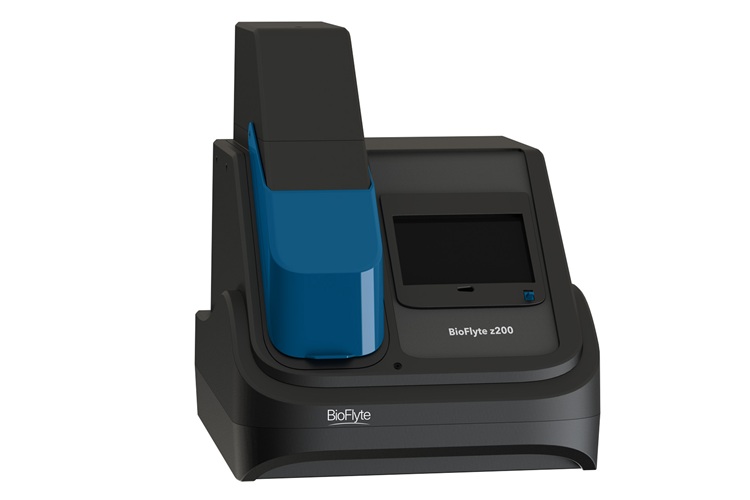
Rapid Diagnostic Technology Utilizes Breath Samples to Detect Lower Respiratory Tract Infections
Respiratory tract infections (LRTIs) are leading causes of illness and death worldwide, particularly among vulnerable populations such as the elderly, young children, and those with compromised immune systems.... Read moreIndustry
view channelELITech and Hitachi High-Tech to Develop Automated PCR Testing System for Infectious Diseases
Molecular testing has become central to diagnosing and monitoring infectious diseases by analyzing genetic information. The use of PCR during the COVID-19 pandemic showed its value, but traditional systems... Read more